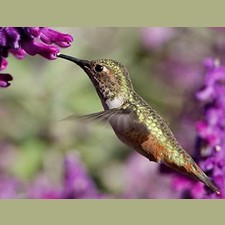Planting for Pollinators
Stephen Brueggerhoff, CEA – Horticulture; Texas A&M AgriLife Extension Service
9/14/2021
Pollinators play a vital role maintaining regional ecosystems and agriculture. USDA reports that an estimated 75 percent of plants rely on animal or insect pollination, with 35 percent food crops depending on the same. Homeowners can support this important service by planting for pollinators, creating habitat and sources of food to maintain biodiversity in the urban landscape.
Take a moment to review basic pollination biology and understand the process. Pollination is the act of transferring pollen produced by the anther (male) to the stigma, a receptive part of the pistil (female) and both within a flower. The vector can be wind or water, and in the case of animals or insects, pollination is a byproduct of the organism searching for food such as nectar or pollen for sustenance.  Imagine a honeybee attracted to a plant through flower or plant colors or chemical signals from fragrance. Once the bee finds the food source, they inadvertently transfer pollen gathered on their bodies by brushing up against specific flower parts. If pollination is successful from this happy accident, result is the formation of fruit and seeds.
Imagine a honeybee attracted to a plant through flower or plant colors or chemical signals from fragrance. Once the bee finds the food source, they inadvertently transfer pollen gathered on their bodies by brushing up against specific flower parts. If pollination is successful from this happy accident, result is the formation of fruit and seeds.
We can increase biodiversity in our home landscape and enhance habitat by choosing native and appropriate non-native pollinator-friendly plants. Perennial native Blue mistflower (Conoclinium greggii) is a butterfly magnet, seasonal fall blossoms that resemble soft lavender-colored pastel brushes  atop two-feet high foliage. Plan for spring pollinators by planting native Gulf coast penstemon (Penstemon tenuis), offering clusters of delicate purple bell-shaped flowers that gracefully arch almost two feet above mounded foliage. Texas A&M AgriLife Extension offers Texas Superstar®, a program listing tested plants for reliability performing well for Texas consumers. A few choice Texas Superstar plants visited by hummingbirds as nectar source are four-foot-tall native Turk’s cap (Malvaviscus arboreus var. drummondii), a drought tolerant upright shrub sporting turban-shaped red flowers in spring and fall, and adapted Firebush (Hamelia patens) growing
atop two-feet high foliage. Plan for spring pollinators by planting native Gulf coast penstemon (Penstemon tenuis), offering clusters of delicate purple bell-shaped flowers that gracefully arch almost two feet above mounded foliage. Texas A&M AgriLife Extension offers Texas Superstar®, a program listing tested plants for reliability performing well for Texas consumers. A few choice Texas Superstar plants visited by hummingbirds as nectar source are four-foot-tall native Turk’s cap (Malvaviscus arboreus var. drummondii), a drought tolerant upright shrub sporting turban-shaped red flowers in spring and fall, and adapted Firebush (Hamelia patens) growing  to mounded three feet with terminal clusters of scarlet tubular blossoms from summer to fall. Using different plants from low-growing herbaceous varieties to shrubs and trees enhances habitat by creating vegetative layers and increasing canopy density, additionally providing shelter and nesting sites for animals and insects. Let your garden grow a little messy and create micro-habitats with small brush piles, dead tree trunks and a water feature for thirsty pollinators.
to mounded three feet with terminal clusters of scarlet tubular blossoms from summer to fall. Using different plants from low-growing herbaceous varieties to shrubs and trees enhances habitat by creating vegetative layers and increasing canopy density, additionally providing shelter and nesting sites for animals and insects. Let your garden grow a little messy and create micro-habitats with small brush piles, dead tree trunks and a water feature for thirsty pollinators.
Additional action we can take to attract and sustain pollinator populations is reducing broadcast pesticide application, using pesticides sparingly and depending on the circumstance. Texas A&M AgriLife Extension’s Earth-Kind® offers a set of landscaping principles as a guide to best gardening practices, as well as a Plant Selector tool that enables you to identify plants appropriate for the purpose and your aesthetic. Find more information about Earth-Kind® and best gardening practices from Aggie Horticulture online: aggie-horticulture.tamu.edu. Another resource with valuable information is offered by the Xerces Society, an international science-based nonprofit organization working toward invertebrate and habitat conservation: xerces.org/. They have posted regional fact sheets in their publications section with lists of plants and the kinds of pollinators they attract. I urge you to seek out local and regional resources that will help you improve your landscape and plant wisely for pollinators.
Brazoria County Master Gardeners will be hosting the 2021 Fall Plant Sale at our demonstration gardens in Angleton October 2 from 9 am to noon. In courtesy to our community repairing from Hurricane Nicholas, we have rescheduled this in-person event offering a variety of ornamental perennials including Texas Superstar plants adapted to Brazoria County, Texas native plants, select citrus and fruit trees and vegetables for a fall garden. Find out more about this event and programs that make a positive difference in our lives by visiting our website: brazoria.agrilife.org. I also encourage you to share your gardening stories and let me know what you are interested in reading by browsing online to my Facebook page: facebook.com/horticulturiststephenb. Fall is abuzz with great ideas, and I’ll see you in the garden.
